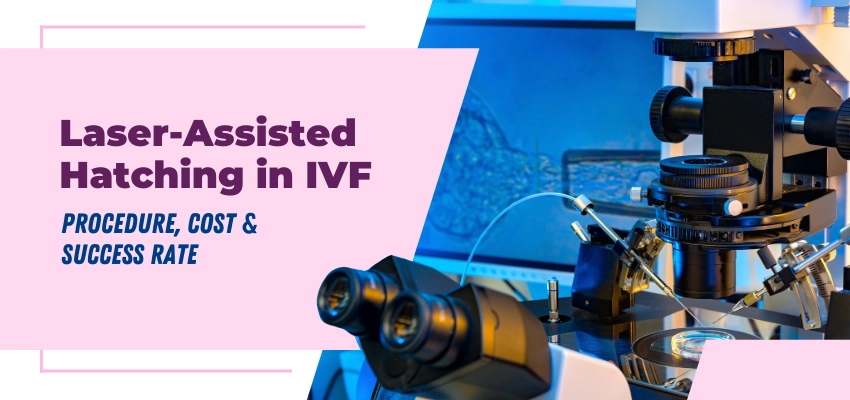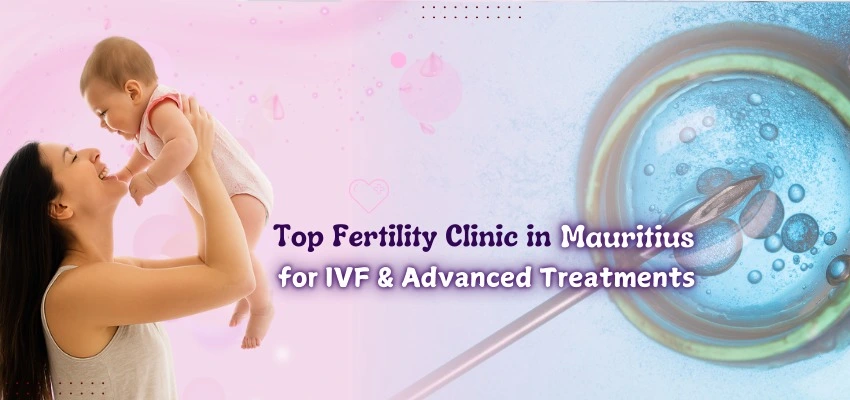In-vitro fertilization (IVF) has transformed fertility treatment for couples facing conception challenges. However, even with advanced technologies, not every embryo successfully implants in the uterus. This is where Assisted Hatching - especially the Laser-Assisted Hatching (LAH) technique - comes into play, giving embryos an added boost to increase the chances of pregnancy.
What Is Laser-Assisted Hatching in IVF?
Laser-Assisted Hatching (LAH) is an advanced laboratory technique used in In-Vitro Fertilization (IVF) to improve the chances of embryo implantation.
In the early stages of development, each embryo is enclosed within a protective outer layer known as the zona pellucida. For a pregnancy to occur, the embryo must naturally break free - or “hatch” from this shell before attaching to the uterine lining.
In certain situations, this process can be challenging, particularly when:
- The woman is over 35 years of age
- There have been multiple unsuccessful IVF attempts
- Frozen–thawed embryos are being transferred
- Embryos display poor developmental progress
In such cases, the zona pellucida may become unusually thick or hardened, making natural hatching more difficult. LAH uses precise laser technology to create a small opening in this outer shell, facilitating the hatching process and potentially increasing the likelihood of successful implantation.
With Laser-Assisted Hatching, a highly focused laser beam is used to create a microscopic opening in the zona pellucida. Unlike chemical or mechanical methods, the laser offers a quick, precise, and safe way to assist the embryo without physical contact.
Steps Involved in Laser-Assisted Hatching (LAH) During IVF
1. Embryo Preparation: The embryo is carefully held in place under a high-powered microscope to ensure precision during the procedure.
2. Laser Application: A focused laser pulse creates a small, precise opening in the embryo’s outer shell, called the zona pellucida, to assist natural hatching.
3. Embryo Transfer: After laser-assisted hatching, the embryo is transferred into the uterus to enhance the chances of successful implantation.
LAH is often recommended in combination with IVF or ICSI (Intracytoplasmic Sperm Injection) and is especially beneficial for patients with lower chances of implantation due to age or medical history.
What Is the Cost of Laser-Assisted Hatching?
The cost of laser-assisted hatching can vary depending on the fertility clinic, location, and whether it’s included as part of a larger IVF package.
Some clinics may offer packages if you're undergoing multiple IVF cycles. It’s best to consult with your fertility center for transparent pricing.
What Is the Success Rate of Laser-Assisted Hatching?
While Laser-Assisted Hatching doesn’t guarantee pregnancy, studies suggest that it can improve implantation rates, especially in selected groups.
- 10–25% improvement in implantation for women over 35
- Women over 35 years old, showing a 10–25% increase in implantation success
- Patients undergoing frozen embryo transfers (FET), where the zona pellucida tends to harden
- Individuals with a history of previous failed IVF cycles, where enhanced hatching may boost embryo attachment
- With an 85% success rate, PFRC stands among the leaders in fertility care.
However, LAH is not routinely recommended for all IVF cases. A fertility specialist will evaluate your age, embryo quality, and medical history to determine whether you’re a good candidate.
Conclusion
Laser-Assisted Hatching (LAH) is an advanced IVF procedure that can enhance IVF success rates for many couples seeking the best IVF treatment. Particularly helpful for women over 35 or those with repeated IVF failures, LAH uses precision laser technology to create a tiny opening in the embryo’s outer shell, making it easier to implant in the uterine lining.
While it may add to the overall IVF cost, the potential improvement in implantation chances can make it a valuable option in the right circumstances. Always consult with your fertility specialist to decide whether LAH should be included in your personalized IVF treatment plan.



.webp)




